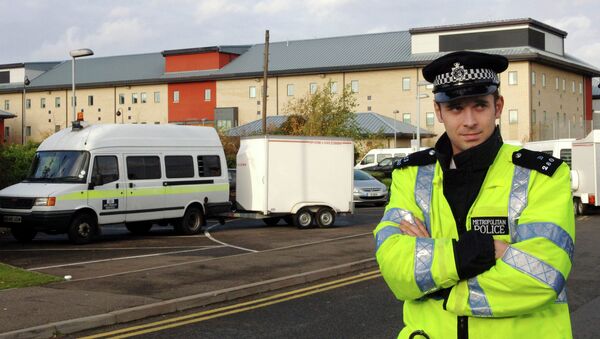UK Home Secretary Theresa May said: "I would prefer to see people being detained for a very short period of time; in fact, for many people they are only detained for a matter of days and the majority of detention is less than two months.
"But it is important we have the system that can ensure we are going to be able to deport people, to remove them from this country quickly, when they have been identified and when they should not be here."
Meanwhile, Britain's Chief Inspector of Prisons has published two separate reports revealing "the fear and chaos at the heart of Britain's murky detention estate." According to Refugee Council Policy Manager Judith Dennis: "These reports cast a much needed light on Britain's shadowy immigration detention estate.
"Ministers must recognize that doggedly pursuing the current system of routinely locking up vulnerable men, women and children whose only crime has been to think they would be safe in Britain isn't working."
March 2015 saw the highest numbers of people detained in immigration centers in the last five years in Britain. A total of 3,483 people were held in detention centers — an increase of 16 percent from last year.
#UK: Demonstration for the closure of #Harmondsworth detention center for refugees. via @JigginoRuss #RefugeeStruggle pic.twitter.com/3vh6vPd9tJ
— Insurrection News (@InsurrectNews) April 11, 2015
Recent figures from the Home Office also reveal that 2014 saw the highest number of people entering detention centers in the last five years, particularly children at the family unit within Tinsley House Immigration Removal Centre.
Tinsley House is where a recent unannounced inspection revealed "a climate of fear, with over a third of people within Tinsley House confessing to feeling unsafe, and over a quarter claiming to have been assaulted or insulted by a member of staff."
The inspection also discovered that three detainees had been held for more than six months and one had been held for 16 months, citing administrative errors as playing a big part in the delays.
The report by the Chief Inspector of Prisons found that: "Some detainee's cases had been progressed too slowly resulting in prolonged, unnecessary and therefore possibly unlawful detention.
"Ventilation was poor and many rooms and corridors smelled badly… Despite continuing efforts, bed bugs were a perennial problem", the report said.
Detained Fast Track: unjust, unlawful & denies #asylum seekers access to justice. Say NO to DFT this #RefugeeWeek pic.twitter.com/3dks3MhA6r
— TheDetentionForum (@DetentionForum) June 2, 2015
Beckett House was also the subject to two separate unannounced inspections. It's the Home Office's busiest reporting centers, with around 1,000 people visiting it each day. Beckett House is also used by immigration enforcement teams and Home Office caseworkers to interview asylum seekers about their asylum claims. Inspectors of the "de facto place of detention" found that governance was weak and the conditions poor.
"Some detainees had been held for long periods in caged vans after their arrest."
One man was found to be locked in a caged immigration enforcement van for almost 24 hours. Some vans did not carry any water.
In what's been described by the Refugee Council as "disturbing" occurrences, inspectors were also present at Beckett House when a woman collapsed:
"Staff failed to immediately call an ambulance, but when they eventually did, they didn't know the center's postcode."
"It's high time the Government acknowledged the truth: immigration detention is inhumane, expensive and inefficient; and it has no place in a civilized society," said Judith Dennis, Refugee Council Policy Manager.
Home Office statistics reveal a jump in the number of children entering detention centers — in the first four months of 2015 the numbers spiked from 19 children in 2014 to 41 this year.




